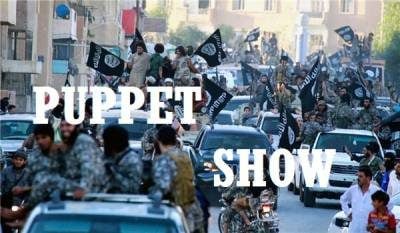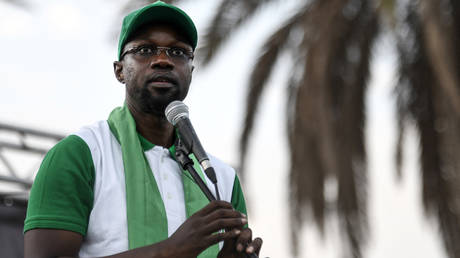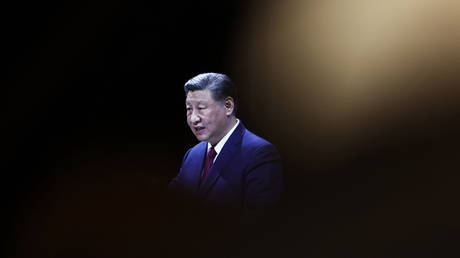The US Is Protecting ISIS to Weaken Rivals, Expand US Occupation of Syria

The dominant view of the US-led coalition against the Islamic State (ISIS), Operation Inherent Resolve, is that its fundamental goal is the defeat of ISIS.
And so, in the wake of the routing of ISIS from Iraq and Syria, the core justification for an ongoing US military presence in Syria is ensuring that no post-mortem ISIS insurgency arises.
That the US is unequivocally opposed to ISIS is simply taken for granted.
Yet a closer look at the history of US involvement shows that counterterrorism has been a lesser concern relative to geopolitical and strategic goals. Whenever the goals of expanding territorial control or weakening rivals conflicts with the goal of opposing ISIS, the entity was either ignored or even empowered in pursuit of these more paramount concerns.
In some ways, by providing a pretext for extended military operations on foreign soil, and by helping to diminish the military might of the Syrian regime and its allies, some coalition officials have seen the Islamic State as a potentially beneficial phenomenon to the wider ends of weakening the Syrian state and opposing Iranian influence in the Levant.
Leveraging the Caliphate
In 2015, ISIS executed an unprecedented advance in Syria.
Audio leaks would later surface of then Secretary of State John Kerry explaining that the Obama administration saw this expansion as beneficial to the US position.
Seeing that this could be used to pressure Assad, the threat of state-collapse was something to be “watched” and “managed,” rather than deterred. “We were watching,” Kerry said:
“… and we know that this was growing… We saw that Daesh was growing in strength, and we thought Assad was threatened. We thought, however, we could probably manage — that Assad would then negotiate.”
Yet this was not simply a case of exploiting events that were entirely out of control. At this time, Obama’s regional allies had been conducting major influxes of support to jihadist factions among the rebels, including ISIS, for years in their bid to oust Assad.
US intelligence oversaw and was well aware of these policies. As Kerry’s observations suggest, the motive was that with “Daesh growing in strength”, the US military would be able to “manage” this development while the expansion of ISIS would mean that “Assad would then negotiate.”
This all changed when Russia, in response to the expanding ISIS movement, intervened. With Russia in the game, regime-change looked like an increasingly dwindling prospect.
Awkwardly, Russia was “carrying out more sorties in a day in Syria than the US-led coalition has done in a month,” while also targeting ISIS oil tankers, something the US-led coalition was reluctant to do — to the point that large convoys of oil trucks carrying ISIS oil were able to operate efficiently and in broad daylight.
The embarrassing contradictions of the “anti-ISIS” campaign were becoming difficult to explain away. Instead of being “degraded” or “destroyed”, ISIS was actually expandingduring the bulk of the anti-ISIS campaign.
Durham University’s Dr. Christopher Davidson, one of the world’s leading scholars in Middle East affairs, has explained that:
Citing a prophetic 2008 RAND Corporation report, Davidson explains that the “illusory campaign that would eventually need to be waged against the Islamic State” would therefore mainly consist of “the establishment of certain red lines” along a “contain and react approach.” This would “involve deploying perimeters around areas where there are concentrations of transnational jihadists,” while making sure to limit any action to only “periodically launching air/missile strikes against high-value targets.”
In other words, Russia’s intervention essentially called Washington’s bluff. Seeing this, and also seeing Syria increasingly in a position to reclaim those territories that ISIS had been so effective at denying them, it appeared that it was time to start getting serious about putting an end to the Caliphate.
Bombing Syria… Again
In terms of its proven effectiveness at weakening the militaries of Syria and Hezbollah, and of draining the resources of Syria’s sponsors, gaining maximum strategic benefit from Islamic State’s eradication would depend not only upon handing over administration of retaken territories to proxies on the ground, but also on ensuring that its guns were primarily being pointed towards Syria and Iran.
While ISIS was indeed fought on certain fronts where it sat upon lucrative energy resources and vital infrastructure, its fighters frequently operated away from allies and toward the front-lines of rivals.
For example, during ISIS’ 2015 surge, whose “threat” towards the Syrian Army (SAA) was to be “managed” by the US as leverage, they successfully encircled and besieged Syrian forces in Deir Ezzor.

Map of Syria showing siege of Deir Ezzor (circled in blue) as of August 2015
Deir Ezzor is important strategically because of its concentration of energy resources, housing the country’s single largest oil deposit, the al-Omar fields.
The only effective force fighting ISIS for the West was the Kurdish YPG militias, also calledthe Syrian Democratic Forces (SDF), who were concentrated along the country’s northern borders. Therefore, the US “sphere-of-influence” that was to be carved from ISIS’ decline was geographically limited to the territory adjacent to this region.
Since the important Deir Ezzor resources were therefore “in-reach”, it was imperative that the Syrian Army did not persevere against the Islamic State and find themselves in a position to take them before the US-backed SDF were able to.




